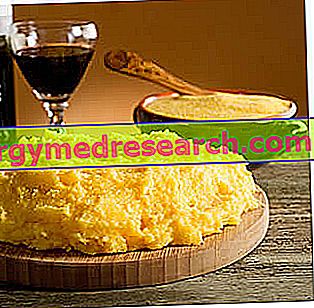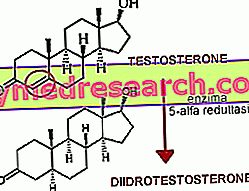Polenta is a food made from cereal flour cooked long in hot water.
It is a particularly cheap food and, therefore, defined as "poor". In our territories, the corn polenta (from the Zea mays plant) arrived just over 300 years before the unification of Italy, but the first findings of its consumption refer to the period of importation of the cereal from the Americas ( mahiz cereal - Christopher Columbus - 1492).

It is a common mistake to associate the name polenta with a derivative of corn as it should indicate any food obtained from cooking cereal-based flours in water. This polyvalence gives polenta an almost unknown origin and, although maize was grown in the American territories at the beginning of the iron age, even the Romans and the Greeks consumed polenta obtained from spelled ( called plus ) or from spelled from Egypt. At the time, the polenta was prepared with the same procedure throughout the Mediterranean basin and its consistency varied according to the cereal chosen for the flour; the polenta was then seasoned with milk, cheese, lamb, pork and sour sauce.
In Italy *, corn polenta has taken on a decisive role in supporting the population only since the beginning of the 1800s. Although it was indispensable at the time for survival from war and famine, corn polenta has a large nutritional limit, namely the reduced BIO-availability of Niacin. The deficiency of this water-soluble molecule, also called vitamin PP or B3, leads to malnutrition, the symptoms of which are grouped into a pathological picture commonly called pellagra .
Although since ancient times the American natives systematically consumed corn polenta, these populations did not seem to incur any type of vitamin malnutrition. This is attributable to their technical-food knowledge, including the chemical bath of the cereal; probably, Mayans and Aztecs had noticed the onset of the pellagrose symptoms in subjects who consumed ONLY fresh corn. and they understood that treatment was necessary to avoid them. The fact is that the natives came to the conclusion of immersing the cereal in an alkaline bath of water and lime, facilitating the conversion of vit. PP NOT available in the BIO-available form.
Although corn polenta does NOT contain gluten, its nutritional composition does not differ significantly from that of wheat.
Video - Homemade Polenta Recipe
Polenta - Everything you should know
X Problems with video playback? Reload from YouTube Go to Video Page Go to Video Recipes Section Watch the video on youtubeTheoretical Video - Polenta: Nutritional Properties
Watch the video
X Watch the video on youtubeAverage nutritional composition of corn flour per 100g of edible portion |  | |
| Power | 362 kcal | |
| Protein | 8.7 g | |
| Lipids | 2.7 g | |
| carbohydrates | 80.7 g | |
| Iron | 1.8mg | |
| Football | 6 mg | |
| Phosphorus | 99 mg | |
| Thiamine | 0.3 5mg | |
| Riboflavin | 0.1 mg | |
| Niacin | 1.9 mg | |
Polenta pizzas - Alice's recipes
Directly from the "In the kitchen with leftovers" section, our personal cooker Alice offers a simple idea to transform the advanced polenta into a tasty appetizer.
Polenta pizzas for celiacs
X Problems with video playback? Reload from YouTube Go to Video Page Go to Video Recipes Section Watch the video on youtubeBibliography:
- Cereals. Properties, uses and virtues - Walter Pedrotti - pag 89
- Recommended Nutrient Intake Levels (LARN) - Italian Society of Human Nutrition (SINU).



